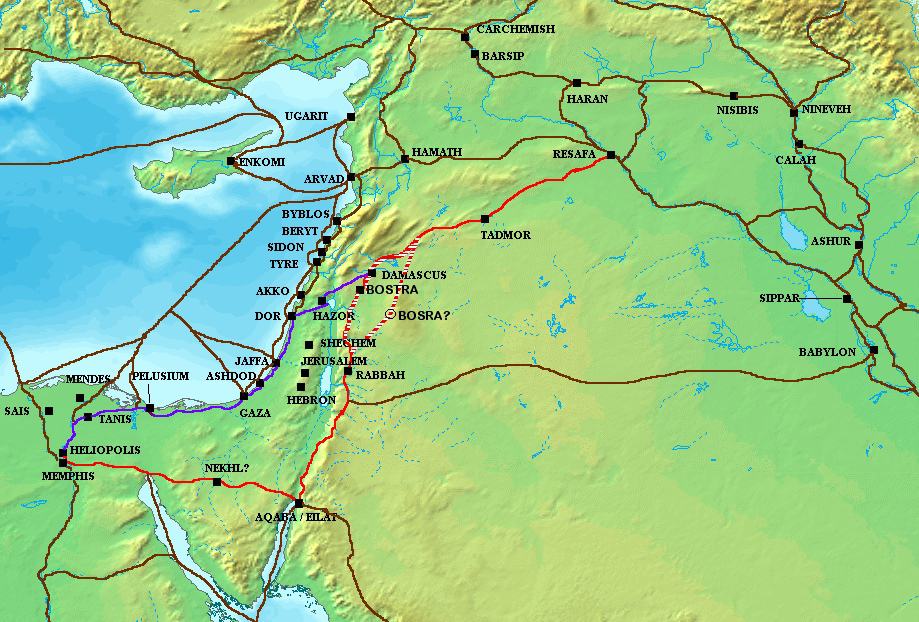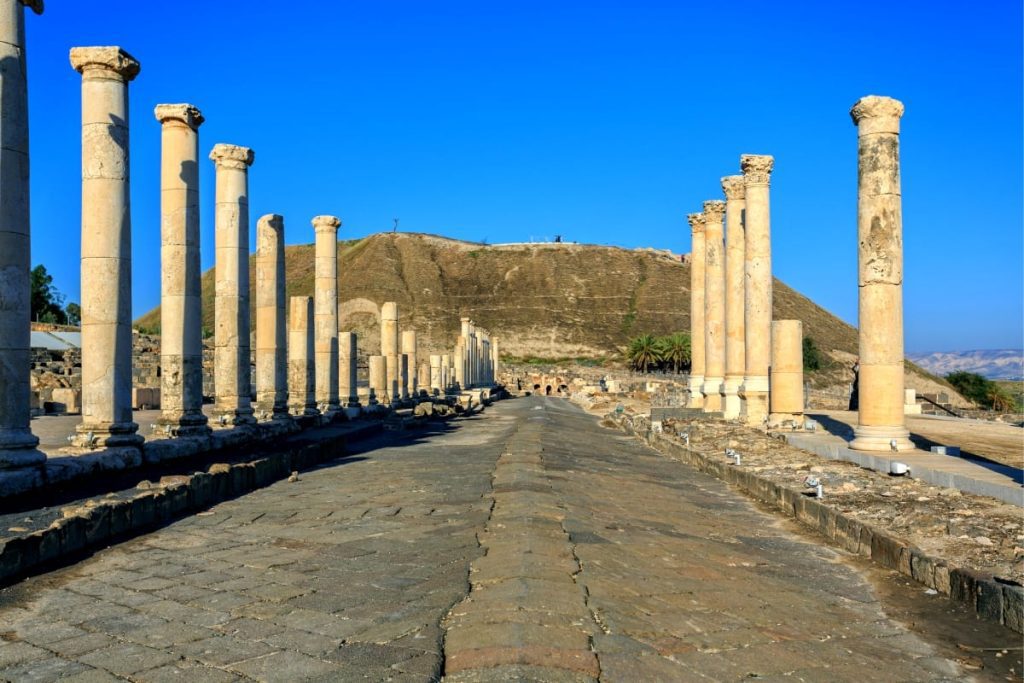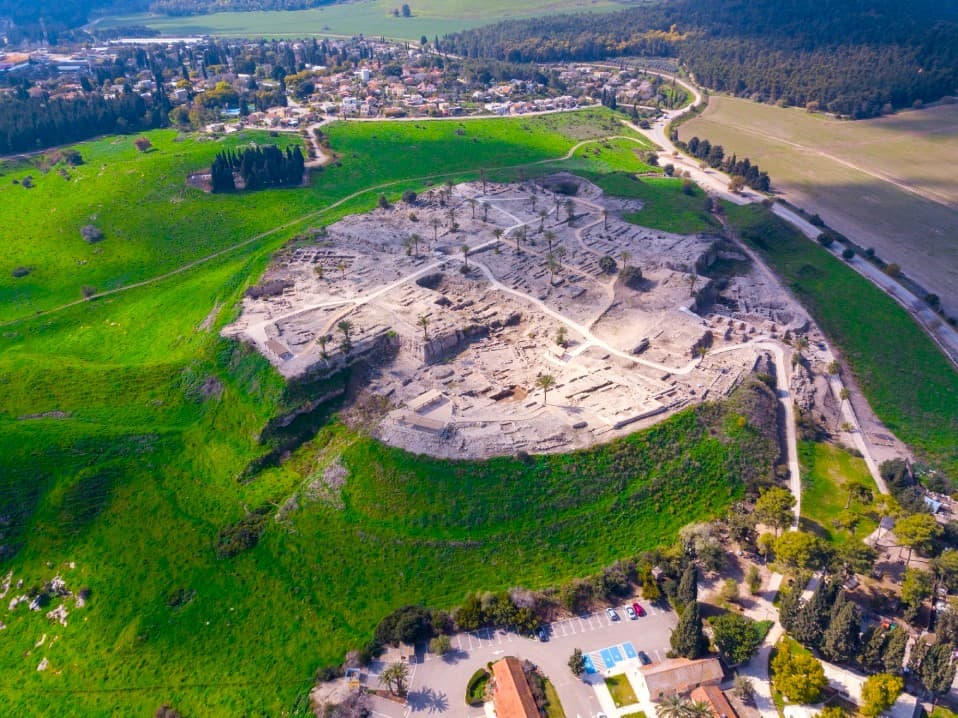The Via Maris, also known as the “Way of the Sea,” was an ancient trade route that ran along the coastal plain of the eastern Mediterranean, connecting Egypt to Mesopotamia and the Levant. The route was used by various civilizations, including the Egyptians, Hittites, Phoenicians, Persians, and Greeks, to trade goods and exchange ideas and cultural practices.

Credit: Briangotts at the English Wikipedia, CC BY-SA 3.0, Wikimedia Commons
The Via Maris (Way of the Sea) was an essential link between the cultures and civilizations of the eastern Mediterranean. Allowing for the flow of goods such as spices, textiles, and precious metals. As well as spreading ideas, religious beliefs, and artistic styles. This exchange of goods and ideas significantly impacted the development of cultures and civilizations along the route. In addition to its role as a trade route, the Via Maris was also used as a military highway, with armies and conquerors using it to gain access to new territories.
The Via Maris and Important Battles
For example, during the reign of Pharaoh Thutmose III in the 15th century BCE, the Egyptians used the route to expand their empire into the Levant. Despite its importance, the Via Maris was not a unified road. But a network of roads, paths, and waterways that changed over time as new routes were added and existing ones were modified. So this made it difficult for travelers and traders to follow a consistent path and easier for bandits and raiders to ambush them.

Despite these challenges, the Via Maris remained an important trade route until the rise of the Roman Empire. Then the focus shifted to the land-based route known as the “Appian Way.” In addition, the decline of the Via Maris was also hastened by the growth of sea trade. Since merchants found it easier and more efficient to transport goods by sea rather than over land. The legacy of the Via Maris can still be seen in the cultural, linguistic, and religious connections. Especially between the eastern Mediterranean and the Levant and in the archaeological sites and ruins that remain along the route.

Megiddo is a critical strategic point of crucial importance for the Way of the Sea. Every journey from Egypt to the north or from the north to Egypt must go through Megiddo. It could not be bypassed until modern times. To the west and north – Mt. Carmel meets the Med Sea. And does not allow easy passage, and to the south – the Mountains of Samaria. In addition, many decisive battles took place near the place. From the campaign of Shishak and the battles of Ahab to the battle of Megiddo in the First World War, won by General Allenby.
Ending Notes
These remnants provide a fascinating window into the region’s rich and diverse cultural heritage and offer insight into the Via Maris’s important role in shaping the ancient world. In conclusion, the Via Maris was a crucial trade route in the ancient world. Also, it connected the cultures and civilizations of the eastern Mediterranean and facilitated the flow of goods, ideas, and people. Its impact on the region’s development cannot be overstated, and its legacy continues to be felt today.







